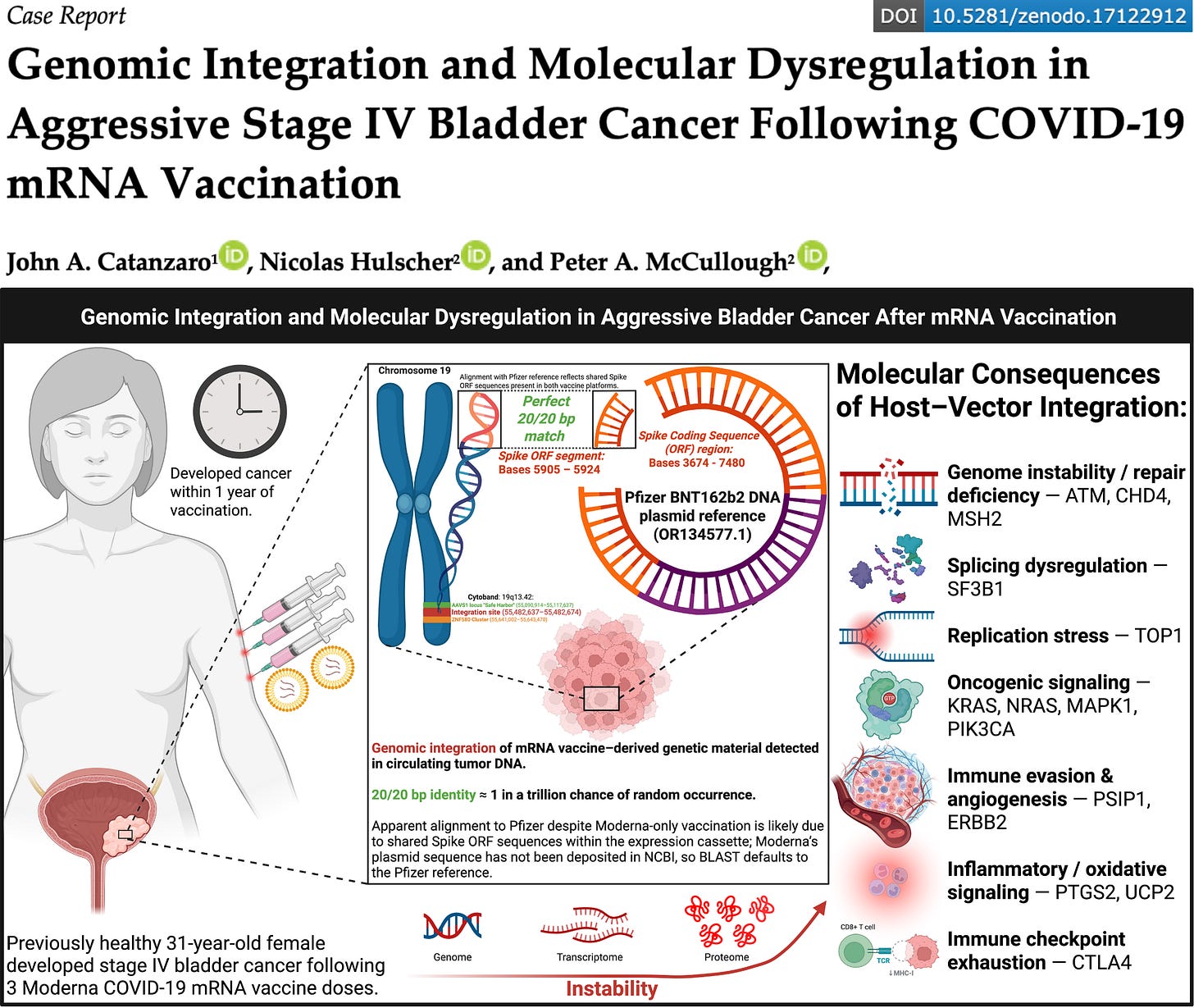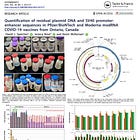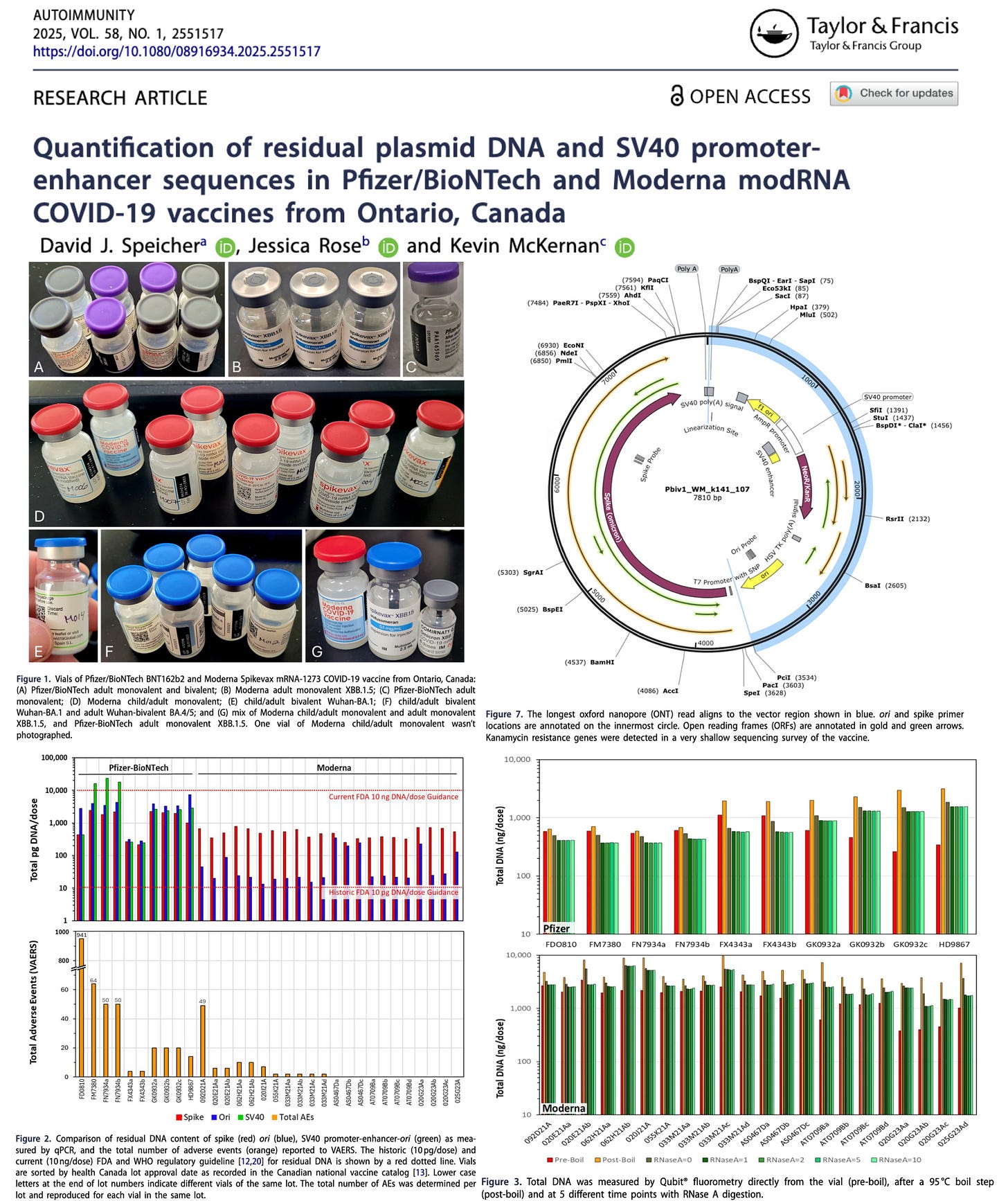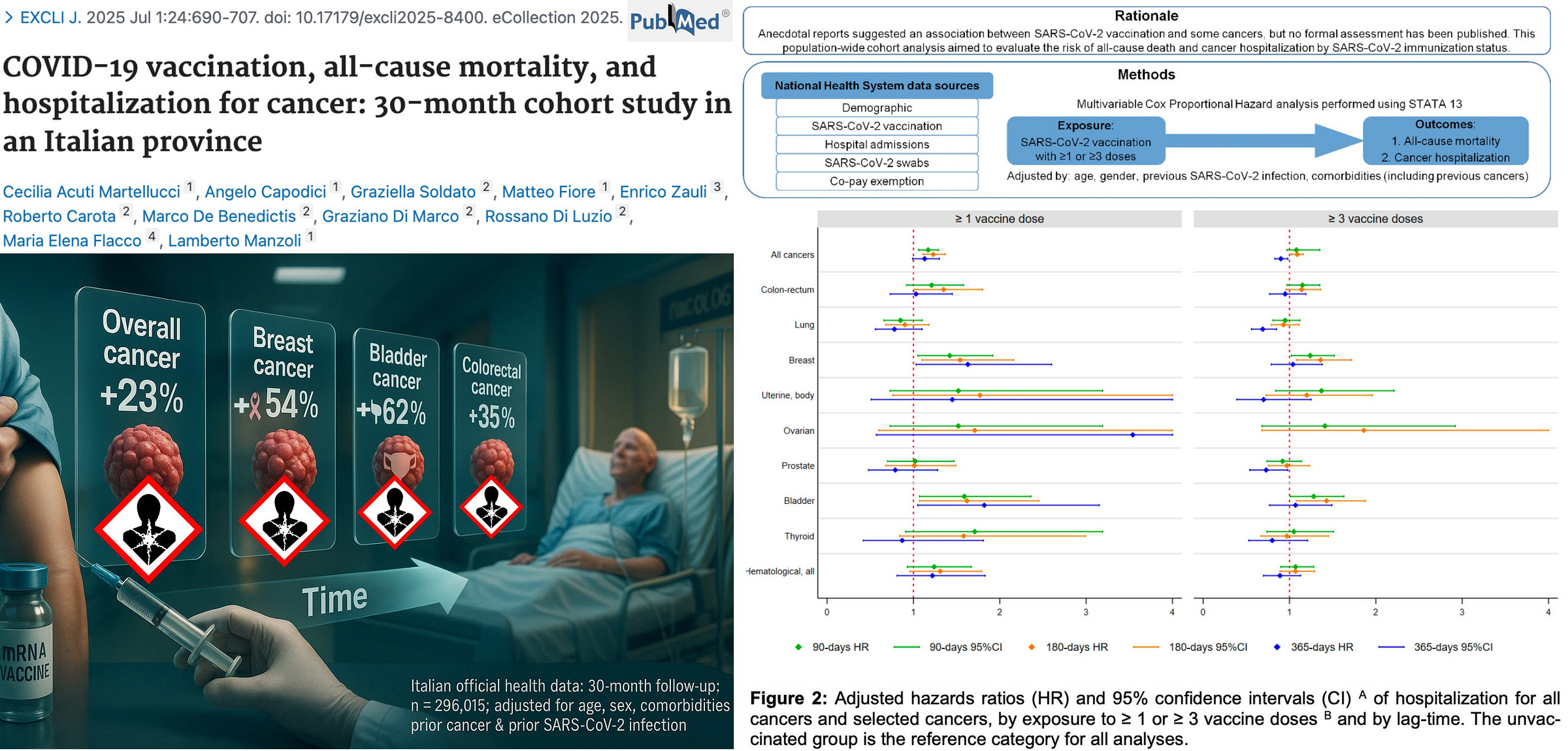BREAKING STUDY: First Direct Evidence of mRNA "Vaccine" Genomic Integration Identified in Stage IV Cancer Patient
Vaccine DNA plasmid-derived Spike gene sequence integrated into chromosome 19 with perfect 20/20 bp identity — accompanied by widespread genomic dysfunction.
For years, public health agencies and pharmaceutical companies insisted it was “impossible” for COVID-19 mRNA injections to alter human DNA. They dismissed all concerns as “misinformation,” offering no evidence to back their assurances.
Today, that narrative collapses.
In our sentinel case report, Genomic Integration and Molecular Dysregulation in Aggressive Stage IV Bladder Cancer Following COVID-19 mRNA Vaccination (Dr. John A. Catanzaro, Nicolas Hulscher, and Dr. Peter A. McCullough; a Neo7Bioscience–McCullough Foundation collaboration), we document—for the first time—direct molecular evidence that genetic material from a COVID-19 mRNA “vaccine” has integrated into the human genome.
THE CASE
We describe a previously healthy 31-year-old woman who developed rapidly progressive stage IV bladder cancer within 12 months of completing a three-dose Moderna mRNA injection series. Bladder cancer is exceedingly rare in young women, and such aggressive presentations are almost unheard of.
To investigate, we performed comprehensive multi-omic profiling, including plasma-derived circulating tumor DNA, whole-blood RNA, and urine exosome proteomics. What we uncovered was striking:
Direct genomic integration event: Within circulating tumor DNA, a host–vector chimeric read mapped to chr19:55,482,637–55,482,674 (GRCh38), in cytoband 19q13.42, positioned ~367 kb downstream of the canonical AAVS1 safe harbor and ~158 kb upstream of ZNF580 at the proximal edge of the zinc-finger (ZNF) gene cluster. This sequence aligned with perfect 20/20 bp identity to a segment (bases 5905–5924) within the Spike open reading frame (ORF) coding region (bases 3674–7480) of the Pfizer BNT162b2 DNA plasmid reference (GenBank accession OR134577.1).
Oncogenic driver hyperactivation (KRAS, NRAS, MAPK1, ATM, PIK3CA, SF3B1, CHD4) — unleashing uncontrolled proliferative and malignant signaling cascades.
Critical DNA repair pathway collapse (ATM, MSH2) — leaving the genome acutely vulnerable to instability, double-strand breaks, and catastrophic mutations.
Severe transcriptomic and proteomic disarray across plasma, blood, and urine biospecimens — consistent with systemic molecular breakdown.
Although the patient received only Moderna injections, the sequence aligned to Pfizer’s published BNT162b2 plasmid reference because Moderna has never deposited its proprietary plasmid in NCBI. Crucially, both Pfizer and Moderna vaccines encode the same prefusion-stabilized SARS-CoV-2 Spike protein and therefore share identical stretches of nucleotide sequence within the Spike ORF coding region. It is within one of these conserved regions that the integration was captured, producing the perfect 20/20 bp match to the Pfizer reference.
The integration site was outside the canonical AAVS1 “safe harbor” locus ( ~55.09–55.12 Mb, 19q13.42) and instead mapped to chr19:55,482,637–55,482,674 (GRCh38), also within cytoband 19q13.42, positioned ~367 kb downstream of AAVS1 and ~158 kb upstream of ZNF580 at the proximal edge of the zinc-finger (ZNF) gene cluster. This region is gene-dense, transcriptionally active, and recombination-prone, with nearby regulators including ZNF580 (19q13.42) and ZNF582 (19q13.43). Integration in this unstable genomic context raises concern for transcriptional disruption, fusion transcript formation, and oncogenic potential.
The probability of a random 20-base sequence perfectly matching a predefined target is ~1 in a trillion. This makes accidental artifact virtually impossible.
Combined with the temporal proximity to vaccination, multi-omic evidence of oncogenic signaling, and direct genomic integration, the case establishes a biologically plausible pathway by which synthetic mRNA vaccines could contribute to cancer development.
MECHANISMS OF INTEGRATION
Integration of vaccine-derived DNA or reverse-transcribed RNA into host chromosomes can occur through several known molecular routes:
Non-Homologous End Joining (NHEJ): Direct ligation of foreign DNA into double-strand breaks.
Microhomology-Mediated End Joining (MMEJ): Alignment of short homologous sequences at breakpoints.
Homologous Recombination (HR): Insertion when plasmid sequences share longer homology with host DNA.
Retrotransposon/LINE-1 Activity: Reverse transcription of RNA into cDNA followed by integration.
Topoisomerase-Mediated Integration: Enzymatic misrepair during DNA unwinding and religation.
All are biologically feasible and align with the patient’s detected DNA repair deficiencies (ATM, MSH2), which increase susceptibility to insertional mutagenesis. Notably, Speicher et al. quantified billions of residual plasmid DNA fragments per mRNA vaccine dose, exceeding regulatory safety limits by 36–627-fold, providing a plausible source of template DNA for genomic integration.
CARCINOGENICITY
This sentinel case provides a critical mechanistic link in the mounting evidence that mRNA technology is carcinogenic.
Epidemiologic evidence: A 30-month population-wide cohort study of nearly 300,000 residents of Pescara, Italy, found that receipt of ≥1 COVID-19 vaccine dose was associated with a 23% increased risk of cancer hospitalization overall (HR 1.23, 95% CI 1.11–1.37). The excess risk was strongest and statistically significant for breast cancer (HR 1.54), bladder cancer (HR 1.62), and colorectal cancer (HR 1.35).
Clinical signals: Marik & Hope formally defined the syndrome of COVID-19 mRNA vaccine–induced “turbo cancer”, assembling case reports and mechanistic pathways by which the spike protein may accelerate malignant transformation through metabolic reprogramming, apoptosis resistance, angiogenesis, and immune dysregulation.
Transcriptomic disruption: In our previous study, we found that COVID-19 mRNA injections severely disrupted the expression of thousands of genes in injured patients compared to healthy controls, driving mitochondrial collapse, immune reprogramming, and oncogenic activation that persisted months to years after injection.
Our case report: Now, for the first time, we provide direct molecular evidence of genomic integration: a vaccine-derived Spike coding sequence embedded in chromosome 19 (circulating tumor DNA) with perfect 20/20 bp identity, accompanied by severe genetic dysfunction.
Taken together, these findings form a convergent picture: epidemiologic risk signals, clinical observations of turbo cancers, transcriptomic chaos, and now direct genomic integration in a human subject. This body of evidence supports a biologically plausible framework in which synthetic mRNA vaccines disrupt genome integrity, accelerate malignant transformation, and drive aggressive cancer phenotypes.
CONCLUSION
While a single case cannot establish definitive causality, the convergence of findings here is undeniable:
Synthetic mRNA vaccine fragments have demonstrated the capacity to integrate into the human genome.
The integration occurred in an unsafe, gene-dense, recombination-prone region with oncogenic potential.
Comprehensive multi-omic profiling revealed a reproducible pattern of genomic instability, transcriptional chaos, and malignant acceleration.
These findings demand urgent genomic surveillance, orthogonal validation with long-read sequencing, and large-scale cohort studies to fully assess the genomic and oncologic risks of synthetic mRNA technology.
This evidence compels the immediate withdrawal of all COVID-19 mRNA products from the market. Humanity now confronts the unprecedented threat of vaccine-induced genomic disruption—a danger too great to ignore.
Epidemiologist and Foundation Administrator, McCullough Foundation
Support our mission: mcculloughfnd.org
Please consider following both the McCullough Foundation and my personal account on X (formerly Twitter) for further content.











I am ecstatic that I was not vaccinated.
Some who read that paper will say genetic integration of foreign DNA in those vials can't happen because no integrase enzymes are present. They forget that when cell division occurs, the nuclear membrane is dissolved. Any DNA contaminants in the cytoplasm, especially smaller ones, can easily become integrated if they closely match segments of the genome. It's not just mRNA shots plagued by DNA fragments. It has also been a problem for many decades with childhood vaccines that use human fetal cell lines to propagate the injected materials. There will always be human DNA fragments in these childhood shots (allowable by FDA regulatory standards not closely monitored) that can integrate into the injected human because they closely match. Once this happens, it will be a part of that cell line for the rest of the child's life. The implications of this are profound when regulation of key genes is lost, creating genomic instability, predisposing the child to chronic disease with no way to reverse it.